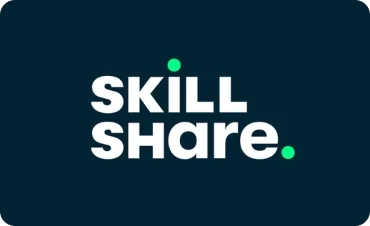When you enroll through our links, we may earn a small commission—at no extra cost to you. This helps keep our platform free and inspires us to add more value.

COMPTIA A+ Motherboards Processors and Memory
Unlock creativity with Skillshare! Learn acrylic painting, AI writing, graphic design, and photography.
Free

This Course Includes
 skillshare
skillshare 0 (0 reviews )
0 (0 reviews ) 1 hours 22 minutes
1 hours 22 minutes  english
english Online - Self Paced
Online - Self Paced course
course SkillShare
SkillShare
About COMPTIA A+ Motherboards Processors and Memory
1 Introduction
2 The System Board
3 Serial Bus vs Parallel Bus
4 Motherboard Chipset
5 Expansion Slot Types
6 Memory Modules
7 CPU
8 BIOS
9 Headers and Sockets
10 CPU Features
11 Memory Characterstics
12 Memory Packaging
13 Cooling Systems
What You Will Learn?
- COMPTIA A+ Motherboards Processors and Memory.
- Everything you need to pass Motherboards CPU and Memory in the A+ Certification Core 1 Exam.
- What you'll learn.
- Requirements.
- Description.
- Hey, Ashraf here. Coding Academy Leader and I are excited to bring you this course as a part of a series to help you pass the CompTIA A+ Certification Core 1 exam..
- Things that will be covered in this Course:.
- Given a scenario, configure settings and use BIOS/UEFI tools on a PC..
- –Install firmware upgrades – flash BIOS..
- –BIOS component information: RAM, Hard drive, Optical drive, CPU, Boot sequence, Enabling and disabling devices, Date/time, Clock speeds, Virtualization support.
- –BIOS security (passwords, drive encryption: TPM, lo‐jack, secure boot).
- –Use built‐in diagnostics..
- –Monitoring: Temperature monitoring, Fan speeds, Intrusion detection.
- otification, Voltage, Clock, Bus speed.
- Explain the importance of motherboard components, their purposes, and properties..
- –Sizes: ATX, Micro‐ATX, Mini‐ITX, ITX.
- –Expansion slots: PCI, PCI‐X, PCIe, miniPCI.
- –RAM slots.
- –CPU sockets.
- –Chipsets: Northbridge/Southbridge, CMOS battery.
- –Power connections and types.
- –Fan connectors.
- –Front/top panel connectors: USB, Audio, Power button, Power light, Drive activity lights, Reset button.
- –Bus speeds.
- Compare and contrast RAM types and features..
- –Types: DDR, DDR2, DDR3, SODIMM, DIMM, Parity vs. nonparity, ECC vs. non‐ECC, RAM configurations (Single channel vs. dual channel vs. triple channel), Single sided vs. double sided, Buffered vs. unbuffered.
- –RAM compatibility and speed.
- Differentiate among various CPU types and features, and select the appropriate cooling method..
- –Socket types: Intel (775, 1155, 1156, 1366, 1150, 2011), AMD (AM3, AM3+, FM1, FM2, FM2+).
- –Characteristics (Speeds, Cores, Cache size/type, Hyperthreading, Virtualization support, Architecture [32‐bit vs. 64‐bit], Integrated GPU, Disable execute bit).
- –Cooling (Heat sink, Fans, Thermal paste, Liquid‐based, Fanless/passive).
- Who this course is for:.